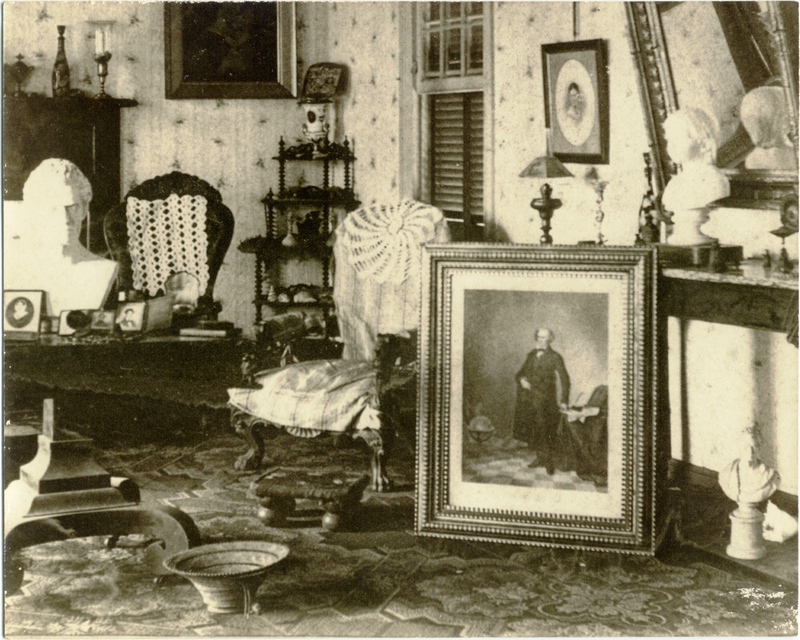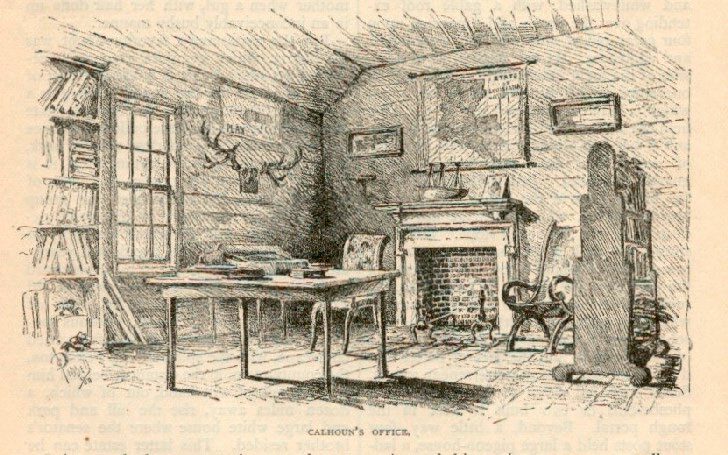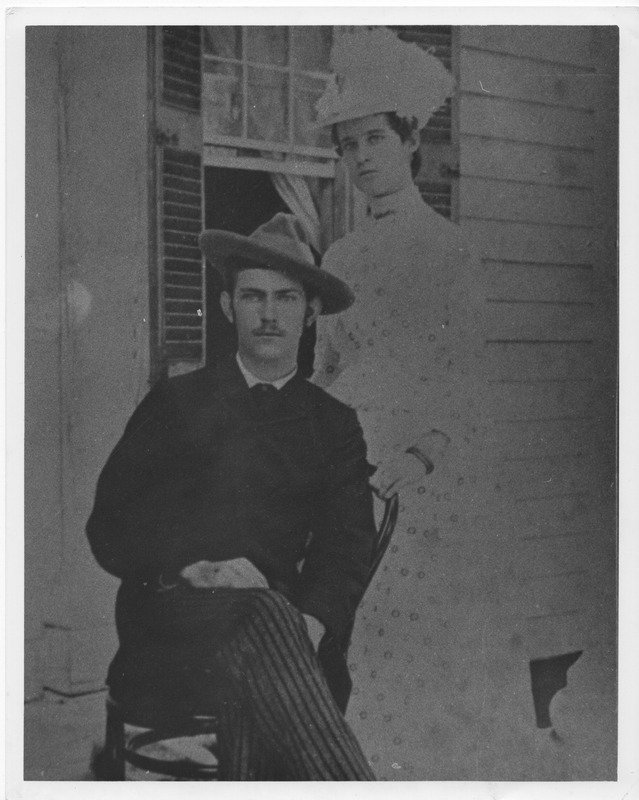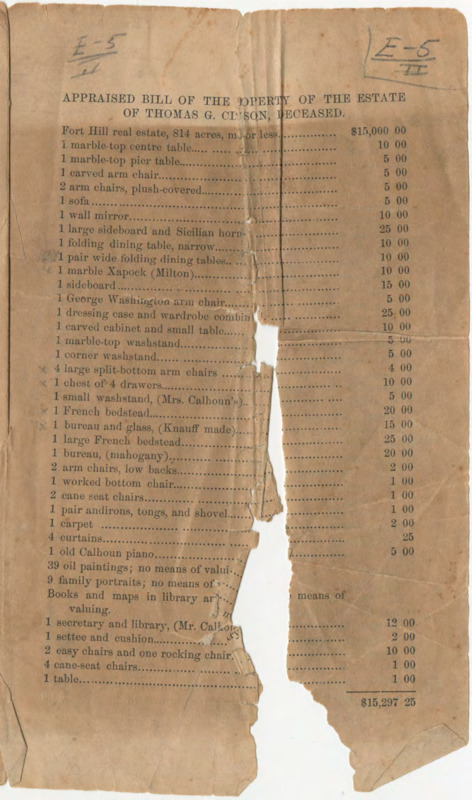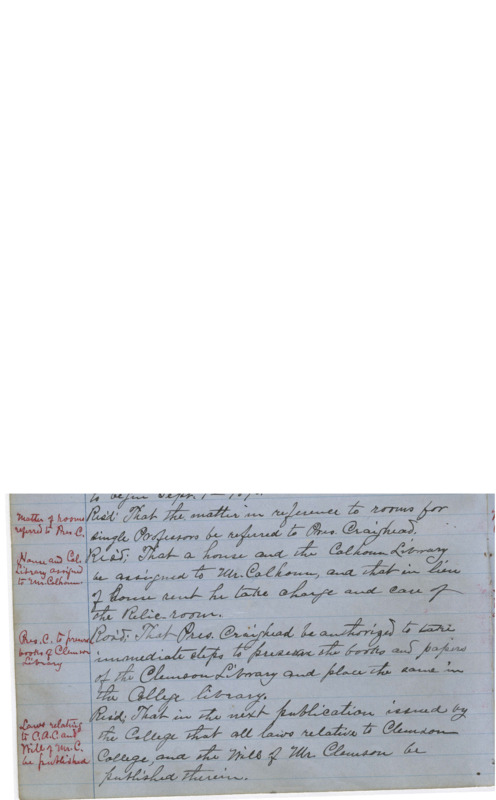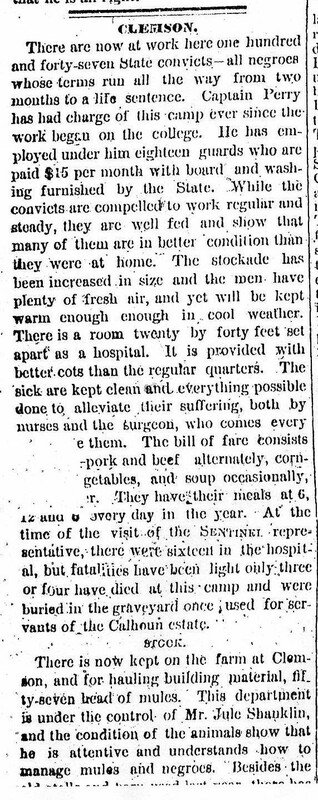Prologue 1888-1892
"It is my desire that the dwelling house on Fort Hill shall never be torn down or altered, but shall be kept in repair, with all the articles of furniture and vesture which I hereinafter give for that purpose, and shall always be open for the inspection of visitors"
The Will of Thomas Green Clemson
Thomas Green Clemson, IV died on April 6, 1888 which set in motion the establishment of both a “high seminary of learning” and created Fort Hill as a museum. The analogy of a Phenix is apropos as from his death date, which is often called Founders Day, gave birth to the University.
Clemson himself had desired the preservation of the home and contents and had used Mount Vernon as a model of what he had aspired to occur with the family home following his death. In his will, Clemson was very specific in his bequest. In four separate sections two in the Will proper and two in the addendum Codicil, Thomas G. Clemson made provisions for Fort Hill.
First in his Will, Clemson envisioned a public museum: In Item 4 of his Will, Thomas C. Clemson stated that: “It is my desire that the dwelling house on Fort Hill shall never be torn down or altered, but shall be kept in repair, with all the articles of furniture and vesture which I hereinafter give for that purpose, and shall always be open for the inspection of visitors.” Second, Thomas Clemson followed that thought in Item 9 , where he wrote, : “I give and bequeath . . . for the purpose of adorning the Fort Hill residence . . . all of my permanent furniture, relics and articles of vesture, pictures and paintings.”. Thereby, the founder of Clemson University specified many of the components of the modern museum definition: characteristics a permanent facility, caring for tangible artifacts, and in the case of an historic house museum, the structure itself as a collections artifact, cares for those items through structural preservation and object conservation, exhibits, interprets and presents educational components open to the public on a regular basis. Definitions of a museum utilized by the American Alliance of Museums and the International Coalition of Museums (ICOMS)
Thomas Clemson anticipating a challenge to his Will amended it in a Codicil which had some transitional changes such as the shift to naming Richard Wright Simpson as his executor, due to the untimely death of his attorney James Henry Rion. Yet in the Codicil, Clemson again directed another two sections to Fort Hill which again clarify his expectations of a museum with provisions for staffing and funding. Third In Item 9 of the Codicil, Clemson wrote, “I hereby authorize and direct my executor to employ such persons he may deem necessary to take charge of the Fort Hill dwelling house and the articles therein donated, . . . and to pay the said persons such a sum of money for their service as he may deem right and proper.” And finally, and even more succinctly regarding funding: “I authorize and empower my executor to expend such sums of money as he may deem necessary to keep the Fort Hill dwelling house and premises in repair.”
Will of Thomas Green Clemson, IV
Thomas Clemson directed the core of the contents of the museum which are recorded in the Estate Appraisal of Fort Hill The three-page documents list both personal items and real estate including his property in Bladensburg Maryland and the Fort Hill property. Yet other property and artifacts Thomas Clemson left to two families and individuals, to his granddaughter Floride Isabella Lee of Carmel, New York, he left approximately 288 acres and her choice of furnishings and mementos, to his attorney Clemson left his sealing ring and his choice of a painting, and to his housekeeper, Clemson left a host of items. These are significant collections in themselves and many although scattered following Clemson’s death are reacquired by Clemson University for the Fort Hill Collection. Thomas G. Clemson’s former housekeeper Jane Prince could temporarily remain in Fort Hill until accommodations were arranged for her to move into in the new Town of Calhoun. Her daughter was married at Fort Hill and their wedding portrait shows the happy couple on the front portico next to one of the columns with a shutter behind.
